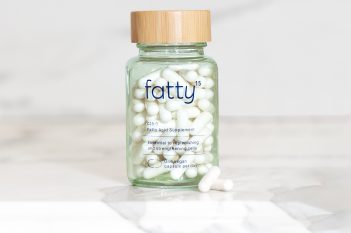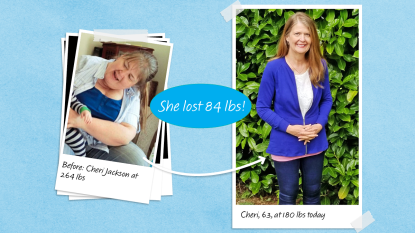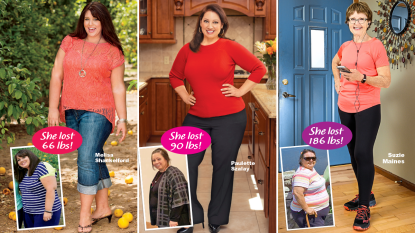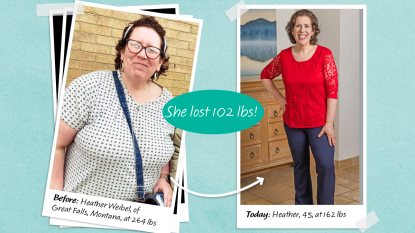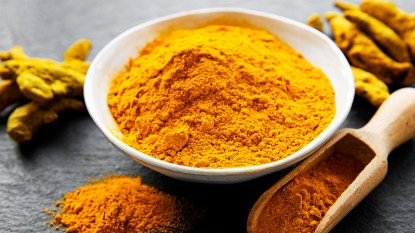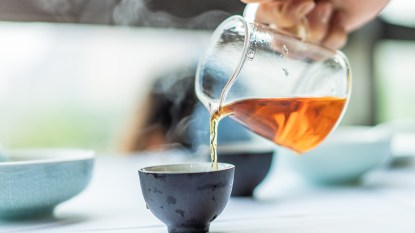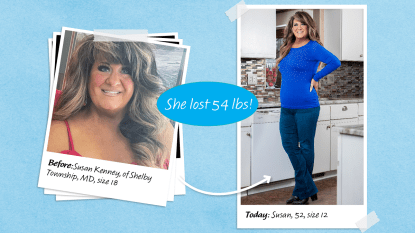Research Shows Menopausal Weight Gain Can Be Avoided — Here’s How To Use the Science To Lose the Weight
It's not all about exercise and cutting calories.
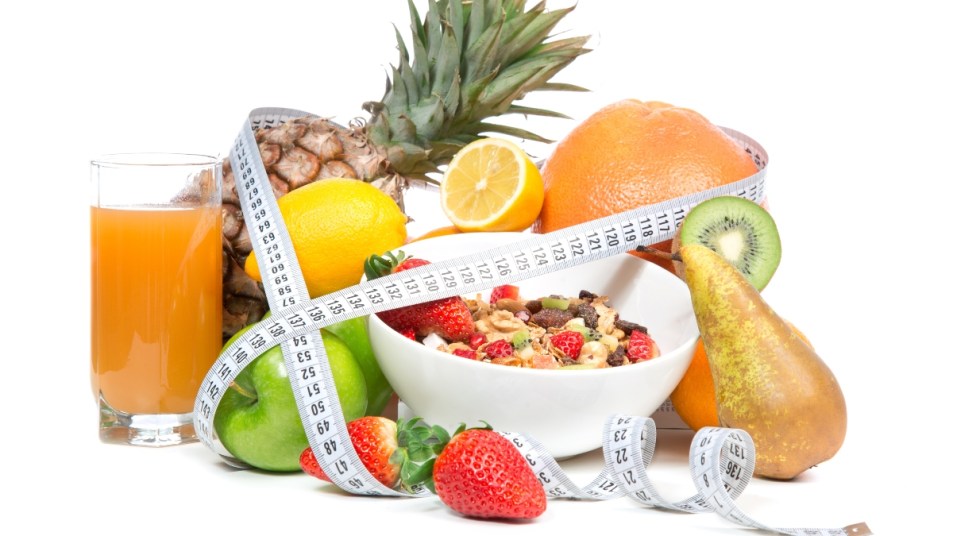
“Eat less and exercise more.” That’s the advice taught in medical school that OB/GYN Mary Claire Haver, MD, gave patients whenever they complained about menopausal weight gain. And when they returned, still packing on pounds, Dr. Haver figured they must be cheating and just needed to work harder. Until… Dr. Haver experienced menopausal weight gain herself and realized the advice she’d doled out for years didn’t work. “I was frustrated and starving myself and not seeing any long-term results.”
Finally, her husband challenged her with, “You’re a scientist. If something’s not working, you’ve got to stop using the same tools and find new tools.” So, Dr. Haver dove into the research. She called everyone she knew in nutrition, and they all pointed her to the same culprit: inflammation.
Why Menopause May Make Weight Loss Difficult
During menopause, our body starts to work against us, Dr. Haver learned. As estrogen levels drop, our body may start driving fat storage to the belly region. Indeed, menopausal women are more likely than other women to develop cardiovascular disease (though this is not just because of belly fat — hormone fluctuations in general seem to have an effect on cardiovascular health).
Next come insistent carb cravings, and when we give into them, blood sugar may drop at night, causing insomnia, which affects up to 60 percent of postmenopausal women. And there’s no rest for the weary: A 2017 study published in the Menopause journal found that women carrying extra pounds tend to also suffer worse hot flashes and night sweats than their slimmer peers.
Women’s health expert Sara Gottfried, MD, author of Women, Food, and Hormones, has seen all these frustrations in her own patients. “Losing fat after age 35 is not about discipline so much as what to eat, when to eat, and how your food talks to your hormones,” she says.
The Role Nutrition Plays in Postmenopausal Health
In searching for better tools, Dr. Haver pinpointed four nutrients women often lack that help combat menopausal weight: fiber, magnesium, vitamin D, and calcium. The benefits speak for themselves: Ratcheting up fiber intake can boost gut microbes and aid in weight loss; increasing magnesium is shown to reduce weight-stalling inflammation; getting more vitamin D may help women shed more weight; and supplementing with calcium may rev fat loss. And the best way to get these perks, according to Dr. Haver, is by enjoying an anti-inflammatory diet composed of 70 percent healthy fats, 20 percent protein, and 10 percent complex carbs.
Additional Benefits of an Anti-Inflammatory Diet
When Dr. Haver ate this way, she melted off 20 stubborn pounds, mostly in her belly. She started telling everyone about her plan, which she named The Galveston Diet after her hometown in Texas. She even earned an additional degree in culinary medicine.
So far, Dr. Haver has helped more than 100,000 women learn this slimming lifestyle, and her advice has gone viral to her more than 2 million TikTok followers. “There’s a drug for every ailment, except chronic inflammation. All the research says nutrition is the best way to fix it,” she says. “Nutrition is one of the most effective and least utilized treatments for menopausal women.”
Slimming is just one of several perks. Dr. Haver says, “This is about sleeping better and decreasing your risk of chronic-inflammation diseases that escalate dramatically as we go through menopause.” Fans rave about lowering cholesterol, escaping blood-pressure meds, and improving A1C levels to the point that they’re no longer pre-diabetic. Ready to try it yourself? Read on.
How To’s of the Anti-Inflammation Diet
“We can use nutrition to combat inflammation so our body and metabolism work more efficiently,” Dr. Haver says. That’s the focus of her four-week plan, which is rich in anti-inflammatory foods. To start: You’ll get 70 percent of your daily calories from healthy fats, 20 percent from protein, and 10 percent from healthy carbs. (Fiber is a “free” food.) Simply enjoy two meals and snacks each day. When it comes to protein: Aim to eat 25 to 30 grams of protein, or 3 ounces, at a time. Think eggs, cheeseburger lettuce sliders, or Cobb salads. You’ll also load up on Dr. Haver’s favorite nutrients: fiber, calcium, magnesium, and vitamin D. Get started by using this advice…
Delay breakfast until 11am.
“Intermittent fasting has enormous benefits for women in terms of hormone optimization, metabolism, and lowering inflammation,” says Dr. Haver. “Of all the components of the program, this is the one that moves the needle for most women.” Strive for a 16:8 schedule, where you fast for 16 hours (many while sleeping) and eat during an eight-hour window. Note: Some sources recommend an early breakfast for weight loss instead. Talk to your doctor to determine which option is best for you.
Build ‘goal’ meals.
When it’s time to eat, look for easy recipes that “hit all your goals in one meal.” Dr. Haver breaks her fast with a parfait made with full-fat plain Greek yogurt, berries, nuts, chia seeds, flaxseed, and hemp. She says, “You know you’re getting healthy omega-3 fats and protein, plus fiber and anti-inflammatory compounds like anthocyanins from the dark berries.”
Note: Worried dairy may stoke inflammation? A review of 15 studies found that dairy had no pro-inflammatory effect on overweight individuals. Dr. Haver praises dairy, saying, “The calcium protects our bones and the protein staves off age-related loss of muscle mass and strength.” Note: Not all of the studies in the review were high quality, so more research is needed.
Keep carbs low.
“For lasting weight loss,” says Dr. Haver, “your body chemistry must shift to rely more on fat as fuel, rather than on glucose from carb-heavy diets.” But it’s easy to over-consume carbs. “There are more than 600,000 processed foods in stores, 80 percent of which contain added hidden sugar,” says Dr. Haver. So, she uses the free nutrition tracking app Cronometer. And when selecting carbs, she says, “be picky.” Choose ones rich in fiber, vitamins, and antioxidants — like quinoa, oats, sweet potatoes, and apples. “Carb cravings become a thing of the past.”
Choose fats wisely.
While traditional keto plans welcome all fats, Dr. Haver encourages women to reach for unsaturated, anti-inflammatory fats from olive oil, avocado, nuts, and seeds. Sara Gottfried, MD, adds, “Food is the backbone of the hormones you make, and consuming healthy fat is especially critical to long-term hormone support.” She also likes the polyunsaturated omega-3s found in flaxseed and SMASH fish (sardines, mackerel, anchovies, salmon, and herring).
After 30 days…
Shift to the plan’s maintenance phase, where you eat 40 percent fats, 40 percent protein, and 20 percent carbs. Find more info and tasty recipes in The Galveston Diet (at GalvestonDiet.com or anywhere books are sold) and follow Dr. Haver on Instagram and TikTok.
Staple Foods in the Anti-Inflammatory Diet
Use these slimming staples to make easy meals and snacks:
- Fats (70 percent of daily calories): Avocado, coconut oil, olive oil, olives, chia seeds, flax, butter, raw almonds, macadamias, pecans, walnuts, no-sugar nut butters, mayo made with olive oil or avocado oil
- Protein (20 percent of daily calories): Grass-fed beef bison, chicken, lamb, pork, turkey, wild-caught fish and seafood, anchovies, sardines, eggs, nitrate-free beef jerky, low-sugar protein powder, Greek yogurt
- Complex carbs (10 percent of daily calories): Artichokes, asparagus, bell peppers, beets, broccoli, legumes, Brussels sprouts, cauliflower, leafy greens, apples, berries, whole grains, pickles
Related: Olive Oil and Lemon Juice: The TikTok-Trendy Duo That May Deliver Real Health Benefits
Sample Meals to Get You Started
High-Protein Scramble: In a skillet, scramble 2 eggs in 1 tablespoon butter. Serve with grass-fed turkey sausage and ½ cup tomatoes or fresh berries.
Savory Bean Dip: Blend ½ cup cooked cannellini beans, 1 ½ tablespoons lemon juice, 2 tablespoons tahini, and 1 tablespoon olive oil. Enjoy with veggie sticks.
Easy Meatloaf: Shape 1 ½ pounds ground beef, 1 cup almond flour, 2 eggs and ⅓ cup sugar-free tomato paste into a loaf. Bake at 350 degrees Fahrenheit for 1 hour.
Berry Muffin: In mug, mix 1 egg, 1 tablespoon coconut oil, 4 tablespoons ground flax, 3 teaspoons sweetener, and 2 tablespoons raspberries. Microwave 90 seconds.
This content is not a substitute for professional medical advice or diagnosis. Always consult your physician before pursuing any treatment plan.
A version of this article originally appeared in our print magazine, First for Women.


